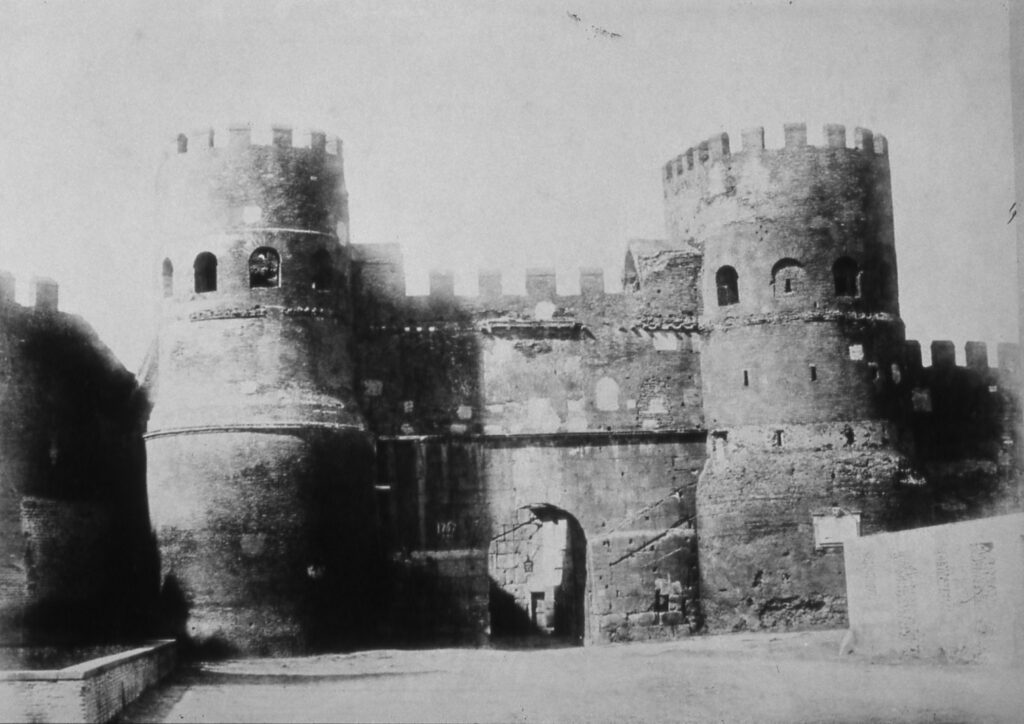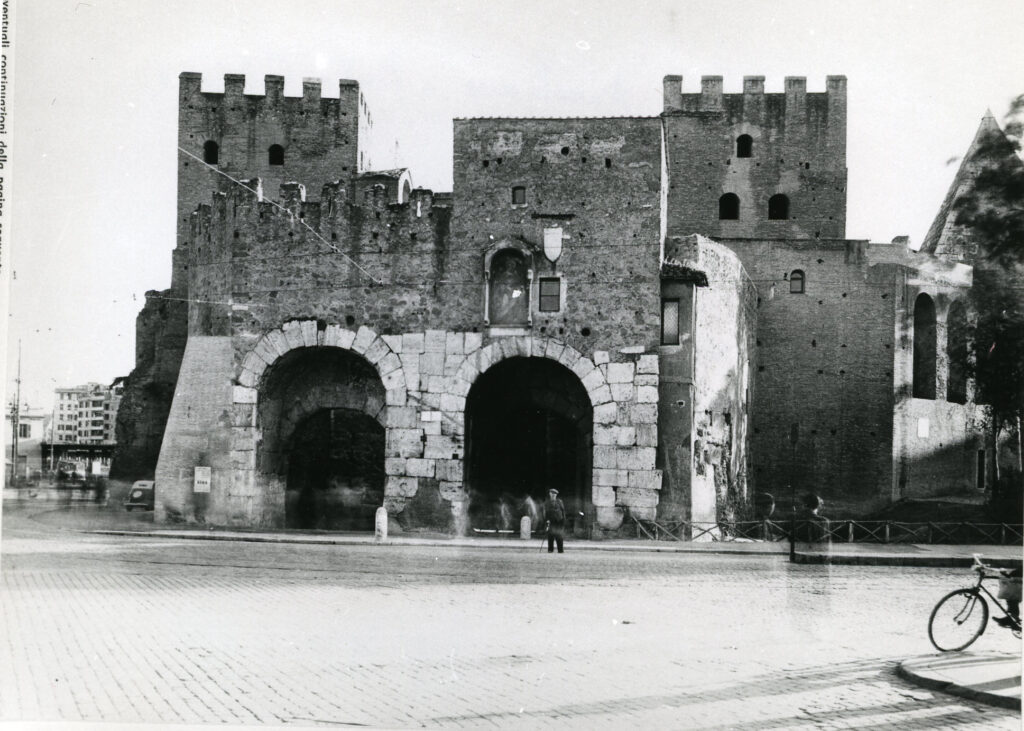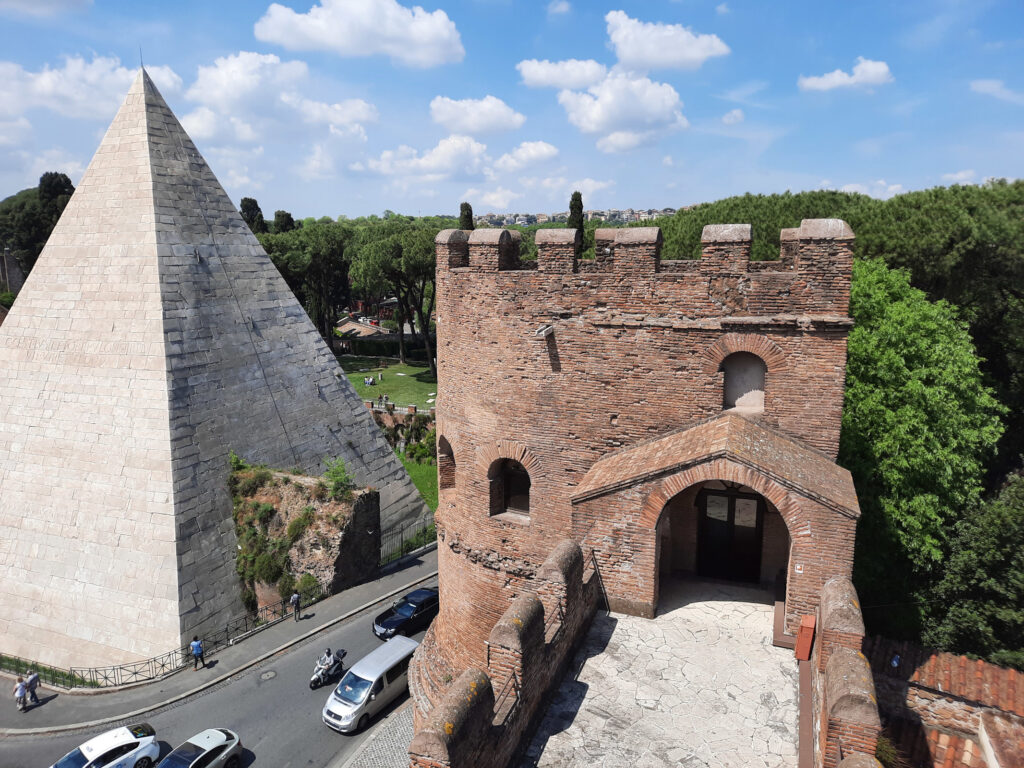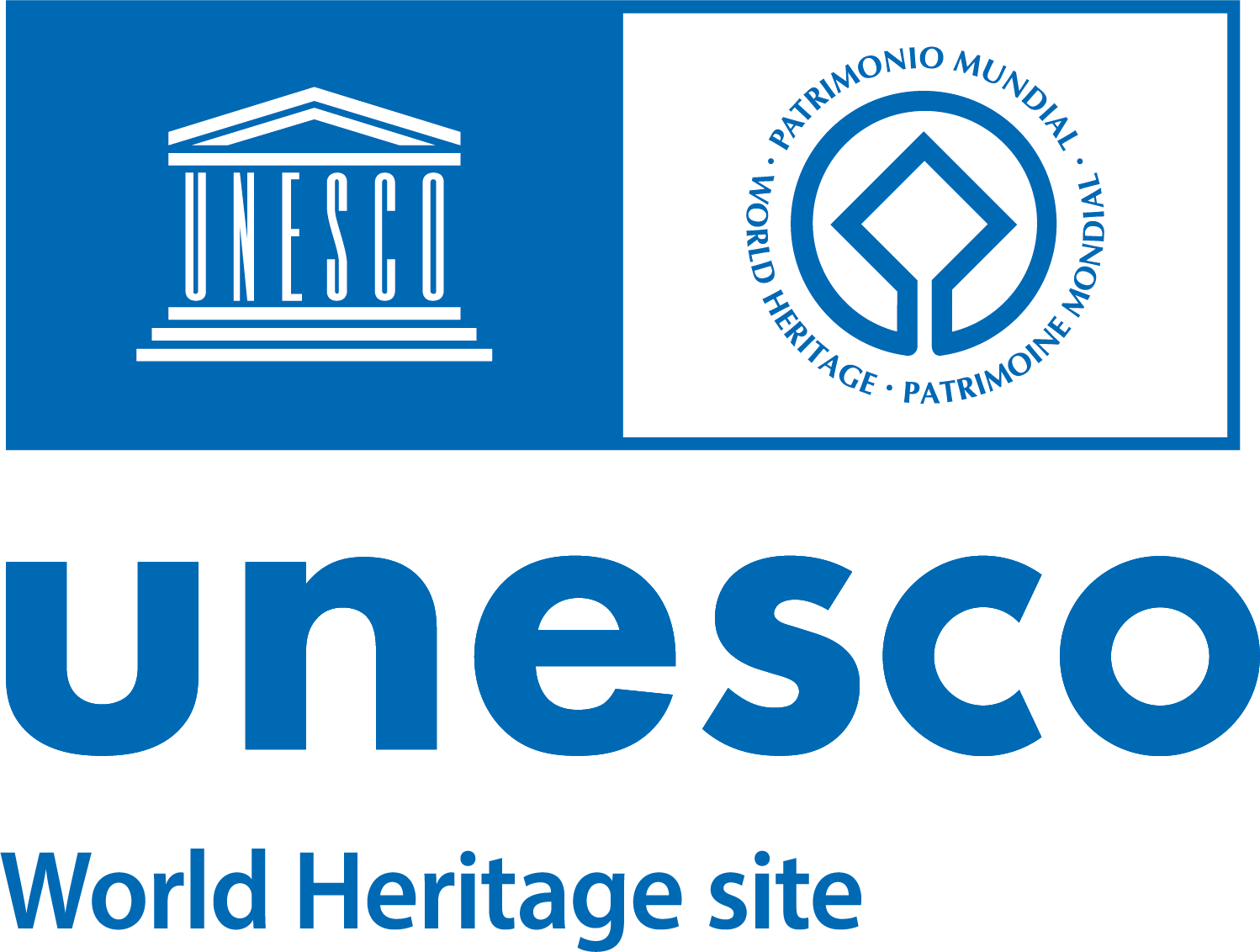One of the best-preserved gates in the Aurelian Walls, it was opened next to Porta Raudusculana in the Servian circuit of walls. The gate was already known as the Porta Ostiensis in the 4th century AD and was later also called Porta Sancti Pauli, due to the proximity of the basilica of San Paolo Fuori le Mura, to which it was linked by a long portico. In its early life the gate had two entrances faced with cut stone and flanked by semicircular-plan towers. Passing through the west archway was the Via Ostiense, while the eastern one, on the inner side of the city, gave rise to the Vicus Portae Raudusculanae. During the time of Emperor Maxentius, a secondary inner gateway was added, also with two archways, by building two pincer-shaped walls. In the same period, the bases of the towers were also refaced with the typical opus vittatum (parallel horizontal courses of tuff alternating with bricks) and two sets of stairs leading to the attic and the patrol walkway were built at the ends of the walls of the secondary inner gateway. A second storey was also probably added in this period. Under Honorius, the external gate was reduced to just one arch; the portcullis chamber was enlarged and six windows added for illumination. The towers were increased in height, reinforced on the outside with blocks of travertine and given a third storey. On the outside, the various floors were marked by cornices made from marble corbels and brick courses.
In the Byzantine age, some of the attic windows were sealed up and others replaced with narrow slitholes. In the east tower, two windows were blocked up and a chapel was created in the space; this has been identified as the Cella Muroniana cited in some medieval texts, a small hermitage of Greek monks who lived in this area of the city. Remnants of the most noteworthy frescoes among those still visible today can be found in the east tower, and they date to the 13th-14th centuries; it is possible to make out a Madonna and Child on a walled door. Traces of the religious use of the upper areas of the gate and of the towers can also be detected in the portcullis chamber, in the west tower and on the terrace above the gallery between the towers; visible here are two medieval constructions that acted as entranceways to the towers themselves.
The courtyard, where the guards were based, was also used from the 5th through to at least the 15th century as a toll point (the raising of tolls was farmed out to private investors in a later age). The so-called Casina del Dazio (customs house), built in 1749, is still inside the Porta San Paolo today; on the façade are two medallions with frescoes depicting an Annunciation and a Virgin and Child with Saint. Another round-arched aedicule supported by slender marble columns resting on brackets, on the interior face of the gate, houses a fresco dating to between the end of the 16th and the beginning of the 17th century; it depicts Saint Peter, who, according to tradition, passed through here on the way to his martyrdom.
The Porta Ostiense was restored many times in the modern age as well. Significant interventions include the restoration undertaken by Nicholas V in 1451, using funds from the Jubilee of the previous year, and that of Benedict XIV, which commencing in 1749, involved the whole ring of walls, as commemorated by an epigraph on the base of the east tower. In 1663, Pope Alexander VII also carried out restoration work, and there are still some traces of his coat of arms in stucco on the arch of the gate.
To facilitate the increasing traffic in the area, in the 1920s the gate was isolated from the walls on the eastern side; in the bombardments of 1944, the section connecting with the Pyramid of Cestius, where there was also a postern (visible in photos of the period), was destroyed. A street was subsequently built here, named after Raffaele Persichetti, who died during fighting with Nazi-Fascist troops.
Porta Ostiense is associated with many historic events. Among the most important is the entrance into Rome of Totila’s Goths following the betrayal of the Isauri in AD 549, and the fighting that followed the armistice of 8 September 1943, when civilians and Italian troops tried to prevent the Nazi-Fascist occupation of Rome. Plaques commemorating the events of the Resistance are affixed to the section of wall flanking the Pyramid.
In 1942, the rooms inside the gateway were turned into a private studio, and in 1954 were opened to the public after the establishment of the Museo della Via Ostiense, the result of a successful collaboration between the city council and the archaeology office of Ostia Antica.
The most recent restoration of the complex was carried out by the city council for the Grand Jubilee of 2000.






1. C. B. SIMELLI, Porta Ostiense, exterior elevation, 1864-1866.
2. Porta Ostiense, exterior elevation.
3. Porta Ostiense, interior elevation.
4. Porta Ostiense, interior elevation.
5. Porta Ostiense, view of the west tower.
6. Porta Ostiense, patrol walkway, level 1.


